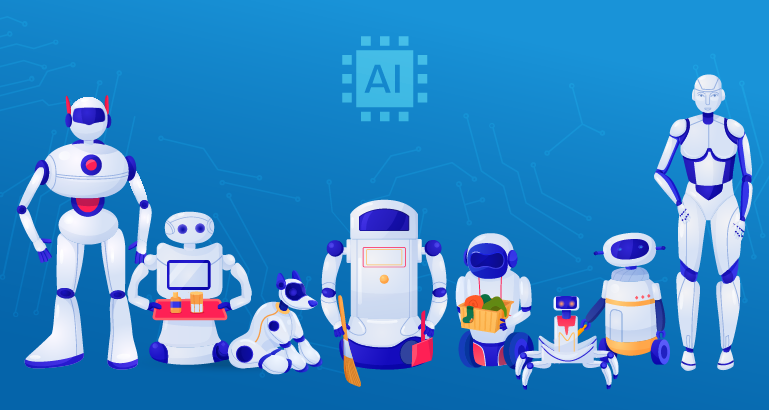Ensuring Security in the Age of Artificial Intelligence
Introduction
In the rapidly evolving landscape of technology, artificial intelligence (AI) has emerged as a transformative force across industries, from healthcare to finance and beyond. While the benefits of AI are undeniable, its widespread adoption has brought forth a new set of challenges, particularly in the realm of security. This blog post delves into the critical aspects of security in AI, exploring the risks, best practices, and strategies to ensure the safe and responsible use of this powerful technology.
The Landscape of AI Security
As AI becomes more integrated into our lives, concerns about data privacy, cybersecurity, and ethical implications have grown. The very nature of AI, which relies on massive datasets and complex algorithms, creates vulnerabilities that malicious actors can exploit. From adversarial attacks on machine learning models to data breaches that compromise sensitive information, the security landscape of AI is multifaceted and ever-evolving.
Let's dive deeper into each of the key security challenges in AI
1. Adversarial Attacks
Adversarial attacks involve manipulating AI models by subtly altering input data in an imperceptible way to humans but confusing the model's predictions. This can result in the model making incorrect or even harmful decisions. Adversaries exploit vulnerabilities in model architectures, often leveraging techniques like gradient-based optimization to find the optimal input perturbations.
Defending Against Adversarial Attacks
- Robust Model Architectures: Designing models with built-in resilience against adversarial attacks is crucial. Techniques such as adversarial training involve training the model with adversarial examples to improve its ability to handle perturbed data.
- Regular Testing and Evaluation: Continuously evaluate models using adversarial examples to identify vulnerabilities and improve their robustness.
- Ensemble Learning: Combining predictions from multiple models can make it more challenging for adversaries to craft effective attacks.
- Input Transformation: Preprocessing input data to remove or reduce noise can help mitigate the impact of adversarial attacks.
2. Data Privacy
AI systems rely on extensive datasets, often containing sensitive user information. Ensuring data privacy is essential to prevent unauthorized access, misuse, or breaches.
Mitigating Data Privacy Risks
- Encryption: Implement robust encryption techniques to protect data both at rest and in transit.
- Access Controls: Restrict access to data based on user roles and permissions to prevent unauthorized usage.
- Secure Data Storage: Utilize secure storage solutions with proper access controls to safeguard sensitive data.
- Differential Privacy: Introduce noise into query results to protect individual user privacy while allowing meaningful aggregate data analysis.
- Federated Learning: Train models on decentralized devices without centralizing raw data, thereby reducing data exposure.
3. Bias and Fairness
Biases present in training data can lead to biased AI outcomes, perpetuating social inequalities and discrimination. Ensuring fairness in AI algorithms is an ethical imperative.
Addressing Bias and Ensuring Fairness:
- Data Collection and Curation: Strive to collect diverse and representative datasets that accurately reflect the real-world population.
- Bias Detection and Mitigation: Implement tools to detect and quantify biases in data and models. Use techniques like re-sampling, re-weighting, or adversarial debiasing to mitigate biases.
- Transparent Algorithms: Develop AI models that provide interpretable and explainable results, making it easier to identify and address biased decisions.
- Continuous Monitoring: Regularly monitor AI systems for bias and fairness issues to ensure ongoing improvements.
4. Malicious Use
AI's capabilities can be harnessed for malicious purposes, such as creating convincing deep fake videos or automating cyberattacks.
Countering Malicious Use:
- Detection Mechanisms: Develop algorithms to detect deepfakes and other malicious AI-generated content.
- Digital Forensics: Establish methods to trace the origin of AI-generated content to discourage malicious actors.
- Behavioral Analysis: Monitor AI applications for unusual or unexpected behavior that might indicate malicious intent.
- Ethical Guidelines: Establish clear guidelines and regulations for the responsible use of AI technology to prevent its malicious misuse.
By understanding and actively addressing these key security challenges, the AI community can work together to create a safer and more secure environment for the development and deployment of artificial intelligence systems. These challenges underscore the importance of interdisciplinary collaboration among researchers, policymakers, ethicists, and practitioners to build trustworthy AI systems that benefit society as a whole.
Best Practices for AI Security
1. Robust Model Design
Creating AI models that are resistant to adversarial attacks and other vulnerabilities is a fundamental aspect of AI security.
Techniques for Robust Model Design
- Regularization: Incorporate techniques like dropout, weight decay, and batch normalization to make models more resilient to adversarial inputs.
- Ensemble Learning: Combine predictions from multiple models with different architectures to improve overall robustness.
- Defensive Distillation: Train models using softened probabilities from another model to make them more resistant to adversarial attacks.
- Input Transformation: Preprocessing input data to remove or reduce noise can help mitigate the impact of adversarial attacks.
2. Data Protection
Protecting the data used to train and operate AI models is essential to prevent unauthorized access and maintain user privacy.
Measures for Data Protection:
- Encryption: Encrypt data both at rest and during transmission to prevent unauthorized access.
- Access Controls: Implement role-based access controls to restrict data access to authorized personnel only.
- Secure Data Storage: Store data in secure environments with appropriate access controls and encryption.
- Synthetic Data: Consider using synthetic or artificially generated data to reduce reliance on sensitive real-world data while maintaining model performance.
3. Continuous Monitoring
Regularly assessing AI models for vulnerabilities and performance issues is crucial to maintain their security and effectiveness.
Monitoring Techniques:
- Model Auditing: Regularly review and audit the model's performance to identify unexpected or biased behavior.
- Penetration Testing: Simulate real-world attacks on AI systems to identify vulnerabilities and weaknesses.
- Anomaly Detection: Employ techniques to identify unusual patterns or behaviors in AI system outputs that may indicate security breaches.
- Ethical Frameworks: Adhering to ethical guidelines and principles throughout the development and deployment of AI systems ensures responsible and fair use.
4. Ethical Considerations:
- Transparency: Document and communicate the data sources, model architecture, and decision-making process to ensure transparency.
- Accountability: Assign clear responsibilities for AI system development, monitoring, and decision-making.
- Fairness: Implement mechanisms to detect and mitigate biases, ensuring that AI systems provide fair and equitable outcomes.
- Regulatory Compliance: Adhere to relevant laws and regulations governing data privacy, security, and ethical AI development.
5. User Education
Educating users about the capabilities and limitations of AI systems is crucial for preventing potential misuse and fostering responsible AI usage.
Ways to Educate Users:
- Clear Communication: Provide understandable explanations of how AI systems work, their limitations, and potential risks.
- Guidelines and Best Practices: Offer guidelines for responsible AI usage and educate users about potential dangers, such as sharing personal information or relying solely on AI decisions.
- Reporting Mechanisms: Establish channels for users to report concerns, issues, or unexpected behavior related to AI systems.
By incorporating these best practices into AI development and deployment processes, organizations can enhance the security, reliability, and ethical integrity of their AI systems. It's important to remember that AI security is an ongoing effort that requires continuous vigilance, adaptation to emerging threats, and a commitment to ethical and responsible AI development.
Conclusion
Security in AI is a multifaceted challenge that requires a comprehensive and collaborative approach. As AI continues to reshape industries and societies, safeguarding its integrity and ensuring its responsible use must remain a top priority. Nu10’s team of AI experts can help you in adopting best practices, staying vigilant against emerging threats, and fostering a culture of ethical AI development. Harness the immense potential of AI while minimizing its security risks.
About Author
Dr. Phaneender Aedla
Dr. Phaneender Aedla has over 24 years of experience in handling and managing petabyte-scale data systems. He blends deep technical acumen with strategic vision, and aims to drive intelligent, sustainable innovation through co-creative partnerships that unlock true business value.








